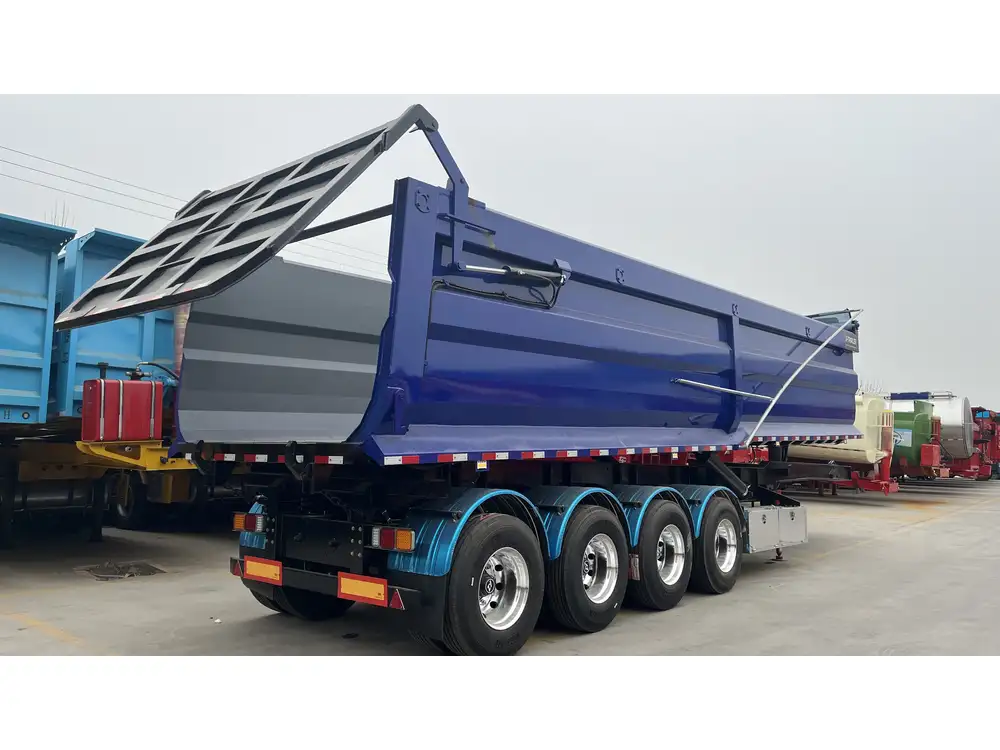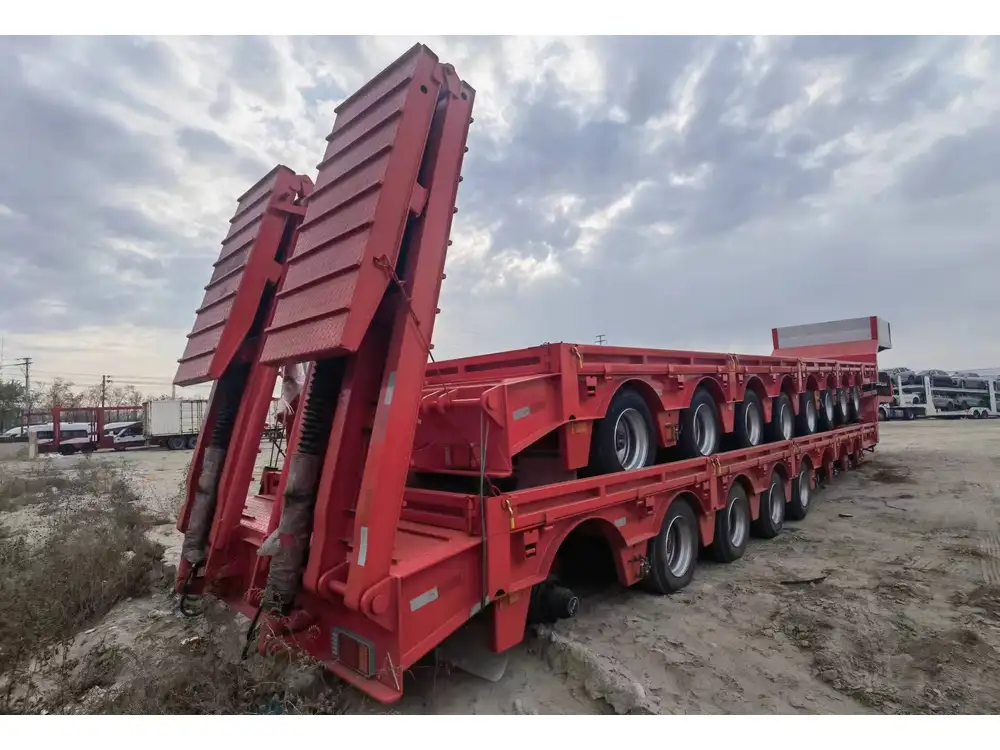Air brakes are a crucial component in the operation of semi-trailers, allowing for reliable stopping power in heavy loads. However, understanding how to release these brakes efficiently is essential not only for the safety of the driver and cargo but also for proper maintenance of the braking system. In this guide, we will delve into the intricacies of air brake systems, the process of releasing them, and best practices to ensure everything works seamlessly.
1. Understanding Air Brake Systems
Before we venture into the mechanics of releasing air brakes, it’s important to grasp how these systems function. Air brakes utilize compressed air to activate braking components, allowing for powerful braking action, particularly needed in large vehicles like semi-trailers.
1.1 Components of Air Brake Systems
The main components of air brake systems include:
| Component | Description |
|---|---|
| Air Compressor | Pressurizes air and supplies it to the braking system. |
| Air Reservoir | Stores compressed air until needed for braking. |
| Brake Valve | Controls air release to engage or disengage brakes. |
| Chambers | Converts air pressure into mechanical force to apply brakes. |
| Slack Adjusters | Compensates for wear in brake linings to maintain optimal performance. |
Having these components in mind assists in understanding the release process.

2. Steps to Release Air Brakes Safely
Releasing the air brakes requires following a specific procedure to prevent accidents and ensure the system operates properly.
2.1 Preliminary Preparations
Ensure Safety First: Always engage the vehicle’s parking brake before attempting to release the air brakes to prevent unintended movement.
Check the Air Pressure: Verify that the air pressure gauge reads within the recommended operational levels—typically between 90 to 120 psi. Insufficient pressure can lead to brake failure.
2.2 Actual Release Process

2.2.1 Manual Release
To manually release the air brakes:
- Locate the Brake Control Valve: This valve is usually found on the dashboard.
- Depress the Valve: Push the brake valve button, which releases air from the brake chambers. You should hear a pronounced hiss as the air escapes.
- Observe the Pressure Drop: Monitor the air pressure gauge. The pressure should lower as the brakes release.
2.2.2 Automatic Release
If your semi-trailer is equipped with an automatic air brake system:
- Start the Truck: Turn on the engine to engage the air compressor.
- Wait for Build-Up: Allow the air compressor sufficient time to build pressure in the reservoir.
- Automatic Release Mechanism: Many systems include features like the spring brake chamber, which automatically releases the parking brakes once adequate pressure is reached.
2.3 Confirming Brake Release
To confirm successful brake release:
Visual Inspection: Walk around the trailer to ensure nothing appears amiss. Check the alignment of the brake shoes and the condition of the brake pads.
Test the Release: Press the brake pedal lightly. If the semi-trailer rolls slightly, the brakes are released. If it does not move, the brakes may still be engaged.
Listen for Air Hissing: A continuous sound will indicate air is escaping, signifying the brakes have released correctly.

3. Troubleshooting Common Issues
Even with the best practices, issues can arise. Understanding how to troubleshoot potential problems can save both time and money.
3.1 Low Air Pressure
If the reading on the air pressure gauge is low, consider these steps:
- Inspect the Air Compressor: Ensure it is functioning correctly. An ineffective compressor can lead to poor air pressure.
- Check for Leaks: Inspect hoses and connections for any sign of leaks, which can lead to significant pressure drops.
3.2 Brake Won’t Release
Should the air brakes fail to release:
- Examine the Brake Valve: A malfunctioning valve may prevent the brakes from disengaging.
- Inspect the Push Rods: Ensure that push rods are not sticking or obstructed. They need to move freely for the brakes to work effectively.

3.3 Inconsistent Brake Feel
If the feel of the brake pedal is inconsistent:
- Look for Air in the Lines: Air in the system can cause brake fading. Bleed the system to ensure it is free of air pockets.
- Inspect the Brake Chambers: Check for proper functionality of the brake chambers. A failing chamber will cause uneven brake application.
4. Best Practices for Air Brake Maintenance
Regular maintenance is vital in prolonging the life of an air brake system. Committing to the following practices can mitigate issues before they arise:
4.1 Routine Inspections
| Frequency | Task |
|---|---|
| Daily | Check air compressor for any signs of leaks. |
| Weekly | Inspect air hoses for wear and tear. |
| Monthly | Verify the functionality of the brake valves. |
| Quarterly | Examine the integrity of brake chambers. |

4.2 Replace Components as Needed
Over time, components can wear and require replacement. Keep an inventory of critical parts to minimize downtime:
- Brake Pads
- Air Hoses
- Brake Chambers
4.3 Train Drivers on Best Practices
Ensure all drivers are trained on the proper use and troubleshooting of air brake systems. Knowledge is power and can prevent many common mistakes.
5. Understanding Regulations
Regulatory compliance is essential for safe operation:

5.1 Federal Standards
Be aware of the Federal Motor Carrier Safety Administration (FMCSA) regulations regarding brake systems. Regular audits and checks are crucial to ensure compliance.
5.2 State Requirements
Regulations may differ by state. Verify that your operations align with local mandates to avoid fines and legal issues.
6. Conclusion
Successfully releasing and maintaining air brakes on semi-trailers is a multifaceted responsibility that involves training, inspection, and adherence to safety protocols. By understanding the components of the air brake system, employing proper release techniques, troubleshooting issues, committing to maintenance, and complying with regulations, operators can ensure their vehicles perform efficiently and safely.
For any complications, always consult with a licensed professional for assistance. Staying informed and proactive will lead to safer operations and protect both drivers and cargo alike. By taking these steps, we can contribute to a safer transportation industry and ensure our air brakes keep performing their crucial function.
This detailed guide serves to not only inform but also facilitate user conversion by addressing potential concerns and highlighting best practices for air brake release and maintenance. Engaging content, structured information, and actionable steps mean that readers will find value in the thoroughness of this article as they navigate through the intricacies of semi-trailer air brakes.



